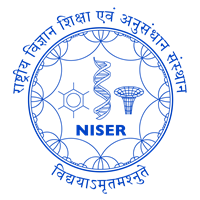

Assistant Professor
jkhannaniser.ac.in
+91-674-2494000 > 2485
PhD (2011 to 2016), Programme in Atmospheric and Oceanic Sciences, Princeton University, USA
M.S. in Physics and Environment and Sustainability (2009 to 2011), Department of Physics and Astronomy, University of Western Ontario, Canada
M.Sc. in Physics (2006 to 2008), Department of Physics, Indian Institute of Technology, Roorkee, India
B. Sc. in Physics (with Hons.) (2003 to 2006), Department of Physics, Banaras Hindu University, India
Refereed Publications
J. Khanna, Karan, An indirect radiative surface-cooling due to water vapor in the tropics and its implications for pre-monsoonal heat stress. Environmental Research Letters, doi: 10.1088/1748-9326/add174, (2025)
J. R. Mohanty, J. Khanna, S. Sen, J. Krishnaswamy, Forest Transition and its Hydro-Climatic Impacts in the Indian Himalayas: Inferences from Field Observations, EGU General Assembly, EGU25-12489, doi: 10.5194/egusphere-egu25-12489, (2025)
J. R. Mohanty, J. Khanna, K. Karan, S. Sen, J. Krishnaswamy, Forest Transition and its Hydro-Climatic Impacts in the Indian Himalayas: Inferences from Field Observations and Model Simulations, AGU Fall Meeting, H160-IV, 1669896 (2024)
M. Kumar, J. Khanna, G. Varma, J. Krishnaswamy, S. Sen, Comparative study of tree transpiration and its co-variability with local hydrometeorology of two competing forests of Chir pine and Banj oak in central Himalayas, India, AGU Fall Meeting, H21R, 1683965, (2024)
M. Kumar, J. Khanna, G. Varma, J. Krishnaswamy, K. Adhikari, S. Sen, Comparitive study of tree transpiration and its covariabiity with local hydrometeorology of two competing forest tree species of Chir pine and Banj oak in the central Himalayas, India, International Botanical Congress, Madrid, Abstract ID - 613/2696 (2024). Accepted for in-person poster presentation but declined due to insufficient travel support
Mahajan, Karan, and Jaya Khanna. "Indirect Water Vapor Radiative Forcing in the Tropics Modulating Surface Temperatures Through a Control on Low and Mid Level Cloud Occurrence." In AGU Fall Meeting Abstracts, vol. 2023, pp. A10-09. (2023).
Kumar, Mukesh, Girish Varma, Jaya Khanna, Jagdish Krishnaswamy, and Sumit Sen. "Comparative study of conifer and broadleaf forest tree transpiration in the Indian central Himalayas: Sap flow measurements using fabricated and commercial sensors." In AGU Fall Meeting Abstracts, vol. 2023, pp. B05-02. (2023).
Krishnaswamy, Jagdish, Denzil Daniel, Sumit Sen, and Jaya Khanna. "Emerging ecological and environmental hazards in the Himalayas." In EGU General Assembly Conference Abstracts, pp. EGU-11871. (2023).
Mohanty, Jyoti Ranjan, Karan Mahajan, Jaya Khanna, Sumit Sen, and Jagdish Krishnaswamy. "Assessment of the Hydro-Climatic Impacts of Forest Colonization in West-Central Himalayas with In situ Observations." In AGU Fall Meeting Abstracts, vol. 2022, pp. B55H-1061. (2022).
Mahajan, Karan, and Jaya Khanna. "The Amplification of Heat Stress Over the Indian Subcontinent due to Atmospheric Water Vapor under Climate Change." In AGU Fall Meeting Abstracts, vol. 2021, pp. A15H-1760. (2021).
J. Khanna, K. H. Cook and E. K. Vizy, Opposite sensitivity to climate change-induced surface warming trends in dry and wet regions in the tropics and subtropics. International Journal of Climatology, doi: 10.1002/joc.6554, (2020)
J. Khanna, B. Lintner, D. Adams, L Silva. Links Between Vertical Distribution of Moisture and Convective Frequency and Intensity in the Amazon Rain Forest. AGU Fall Meeting, San Francisco, USA. A33A-06, (dec 2019)
J. Khanna, D. Medvigy, G. Fisch, TTAT Neves, Regional hydroclimatic variability due to contemporary deforestation in southern Amazonia and associated boundary layer characteristics. Journal of Geophysical Research - Atmospheres, doi:10.1002/2017JD027888, (2018)
J. Khanna, K. Cook and E. Vizy. Wet and dry tropical/subtropical regions show opposite sensitivities to observed greenhouse gas warming. 31st Conference on Climate Variability and Change, AMS Annual Meeting, Austin, USA. 537 (jan 2018)
K. Cook, E. Vizy and J. Khanna. One Drier, One Wetter: A Tale of Two Rainforests. 31st Conference on Climate Variability and Change, AMS Annual Meeting, Austin, USA. 17B.1 (jan 2018)
J. Khanna, D. Medvigy, S. Fueglistaler and R. Walko, Regional dry-season climate changes due to three decades of Amazonian deforestation. Nature Climate Change, 7, 200-204, doi: 10.1038/nclimate3226, (2017)
J. Khanna and D. Medvigy. Land use induced hydroclimatic variability over large de- forested areas in southern Amazon rainforest. AGU Fall Meeting, New Orleans, USA. A41M-06 (dec 2017)
D. Medvigy and J. Khanna. Regional hydroclimatic impacts of contemporary Amazonian deforestation and their spatiotemporal variability – An integrated study using remotely sensed data and numerical tools. AGU Fall Meeting, San Francisco, USA. H31I-04, (dec 2016)
R. M. Nagare, P. Bhattacharya, J. Khanna, and R. A. Schincariol, Coupled cellular automata for frozen soil processes, SOIL, 1, 103-116, doi:10.5194/soil-1-103-2015, (2015)
J. Khanna, D. Medvigy, S. Fueglistaler and R. Walko. Regional hydro-climatic changes due to three decades of Amazonian deforestation. AGU Fall Meeting, San Francisco, USA. B31A-0535, (dec 2015)
J. Khanna, and D. Medvigy. Surface roughness variations control the regional atmospheric response to contemporary scale deforestation in Rondonia, Brazil. EGU General Assembly, Vienna, Austria. 4145, (april 2015)
J. Khanna, D. Medvigy, Strong control of surface roughness variations on the simulated dry season regional atmospheric response to contemporary deforestation in Rondonia, Brazil., Journal of Geophysical Research - Atmospheres, 119, 13, 067-13,078, doi:10.1002/2014JD022278, (2014)
J. Khanna, and D. Medvigy. Surface roughness variations control the regional atmospheric response to contemporary deforestation in Rondonia, Brazil. AGU Fall Meeting, San Francisco, USA. GC13J-0822, (dec 2014)
J. Khanna, and D. Medvigy. Costs and benefits of simulating the hydro-climatological effects of Amazonian deforestation at different resolutions. AGU Fall Meeting, San Francisco, USA. A33E-0268, (dec 2013)
J. Khanna, J. Bandoro, R. J. Sica, C. T. McElroy, New technique for retrieval of atmospheric temperature profiles from Rayleigh-scatter lidar measurements using nonlinear inversion, Applied Optics. 51, 33, 7945-7952, doi:10.1364/AO.51.007945, (2012)
J. Khanna, and D. Medvigy. Links between land use change and recent dry season droughts in Amazonia. AGU Fall Meeting, San Francisco, USA. H54B-05, (dec 2012).
J. Khanna, R. J. Sica, and C. T. McElroy. Atmospheric temperature retrievals from lidar measurements using techniques of non-linear mathematical inversion. AGU Fall Meeting, San Francisco, USA. SA51B-1935, (dec 2011)
R. Wing, et al. First results from the relocated and enhanced Purple Crow lidar. AGU Fall Meeting, San Francisco, USA. SA51B-1945, (dec 2011)
R. J. Sica, et al. The new and improved Purple Crow lidar. AGU Fall Meeting, San Francisco, USA. A11A-0027, (dec 2010)
Invited Talks
J. Khanna. Land-atmosphere interactions and regional hydroclimatic impacts induced by anthropogenic land cover and climate change in wet tropical regions. Center for Atmospheric and Oceanic Sciences, Indian Institute of Science, Bangalore, Karnataka, India, (nov 2017)
J. Khanna. Identification of regional climatic changes due to three decades of Amazonian deforestation. Lamont Doherty Earth Observatory, Columbia University, Palisades, N.Y., USA, (jan 2016)
Workshops
Invited participant in the workshop "The economic value of climate stability from forests: The case of the Brazilian agricultural frontier" organized by The National Socio-Environmental Syn- thesis Center in University of Maryland, USA. (March 2018)
Vegetation, the lowest occupant of our food chain, serves as the base of the pillar of life on Earth. But, although not apparent, vegetation also plays a big role in regulating the Earth's climate, most apparently by the atmospheric regulation of - CO2 through photosynthesis, atmospheric moisture through evapotranspiration and absorbed energy through surface albedo. But what spatial scales does this regulation become substantial enough to cause a detectable modification to the climate? I am interested in investigating the regional hydro-climatological impacts of vegetation. In the past I have worked on deforestation impacts in the Amazon rain forest and my recent interests have evolved to also include such studies in forests in India like the ones in the Himalayas.
One of the challenges for accurate climate change prediction is the adequate representation of convection. Convection and clouds appear in a myriad of spatial scales in our atmosphere. On top of that, a myriad of thermodynamic and radiative processes are involved in convection and cloud development. Not all of this region-specific complexity is understood and even less is represented in climate models. For example, convection in the tropics is traditionally represented based on the thermodynamic state of the large scale atmosphere which results in inaccurate convective triggering and precipitation in numerical models. I share my research interest with several active efforts that aim at improving our understaning of convection on regional scales. In particular I am investigating such processes over densely vegetated areas in the Amazon and in India.
Climate projections for the Indian subcontinent show an alarming increase in extreme heat events throughout the Indo-Gangetic plains and some parts of south eastern India. The extreme events are intriguing because the observed temperature records from India do not show a significant increasing trend in daily peak temperatures despite the overall increasing trend in daily average temperature. Studies have suggested the crucial role of increased near surface humidity in increasing the 'perception' of heat during heat waves. But water vapor in the atmosphere can have other physical and dynamical impacts as well which could ultimately manifest in to heat wave sensitivity on the surface. Understanding such under-lying processes is another research direction I am currently pursuing.
January 2019 Department of Hydrology, IIT Roorkee, India
Instructor for graduate course HY-513 - Hydrometeorology and Climate Change.
2017 - The McGraw Center for Teaching and Learning, Princeton University, USA Certificate from the Teaching Transcript Program.
September 2014 to January 2015 - Princeton University, USA
Assistant in teaching for GEO415 - Introduction to Atmospheric Sciences.
September 2009 to August 2011 - University of Western Ontario, Canada
Instructor for Physics 1301A/1302B - Introductory Physics 1/2 (undergraduate laboratory course).
August 2008 to May 2009 - Indian Institute of Technology, Roorkee, India
Teaching Assistant for Undergraduate Introductory Physics lecture course and physics laboratory training course.
SEPS Convener for UG and PG Academic Activities